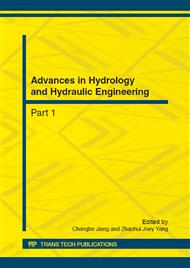p.615
p.619
p.628
p.634
p.643
p.647
p.653
p.658
p.664
The Analysis on Effect of the Terrain to the Culverts Stress by the Finite Element Method
Abstract:
Highlight advantages of the finite element method is suitable for non-linear, non-homogeneous, complex boundary conditions. The paper adopts the finite element method to analysis culvert stress in Valley terrain. Gain that when the filling height H=40 meters, considering the valley topography calculated Ks=1.19, otherwise the Ks=1.435, the difference is about 17%. Therefore, the effects of the valley terrain to the high embankment culvert can not be ignored.
Info:
Periodical:
Pages:
643-646
Citation:
Online since:
October 2012
Authors:
Price:
Сopyright:
© 2012 Trans Tech Publications Ltd. All Rights Reserved
Share:
Citation:


